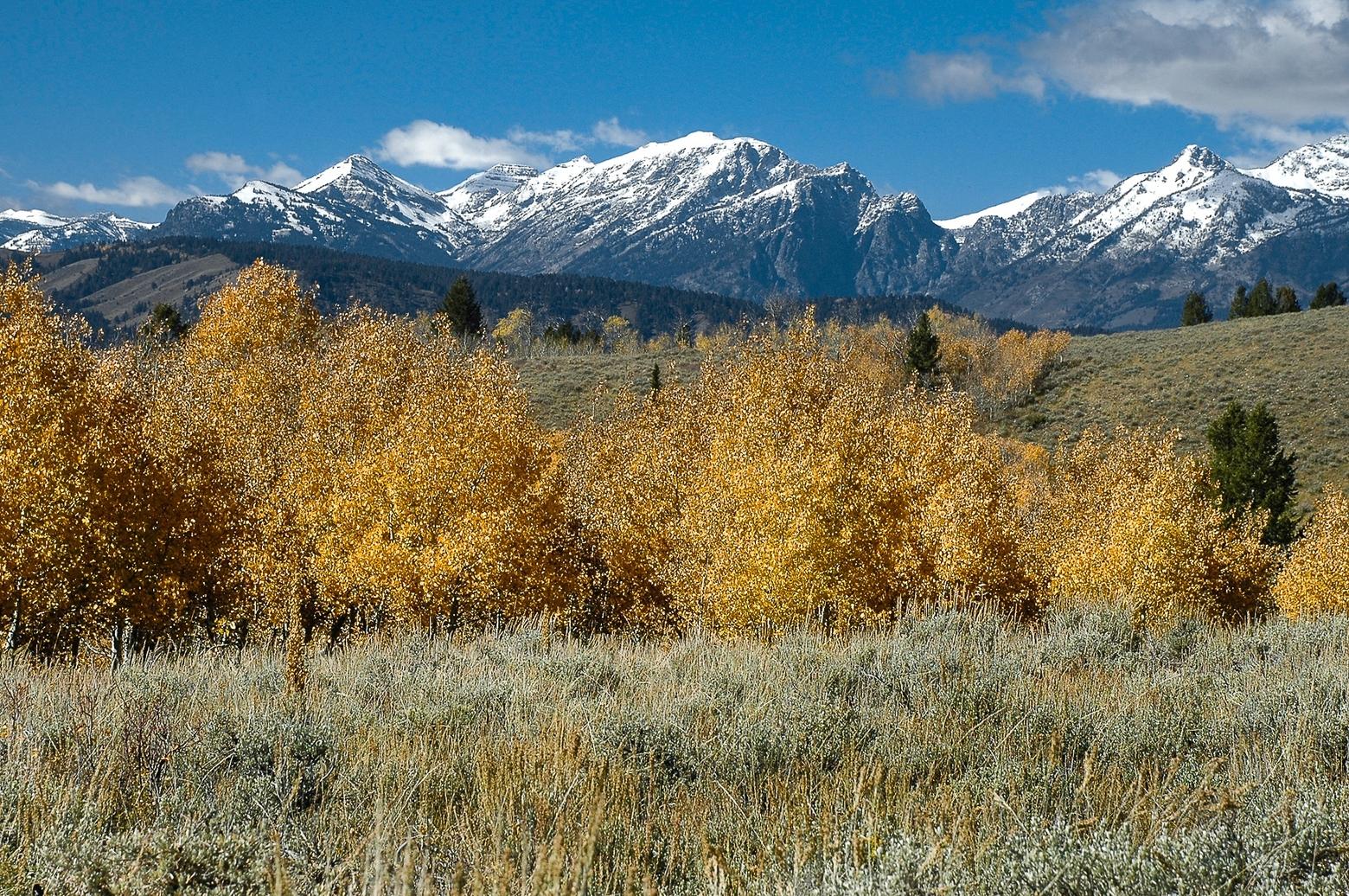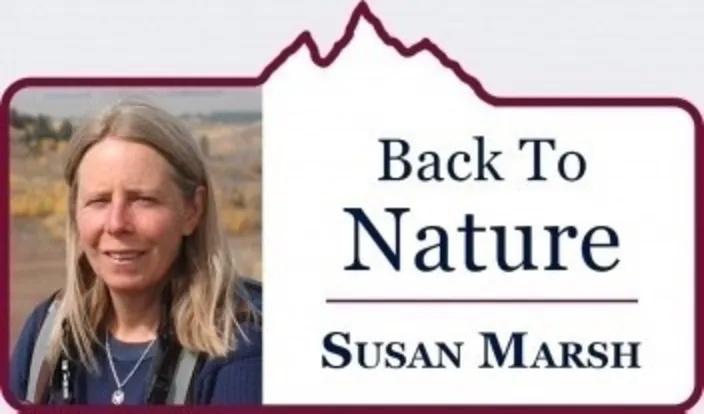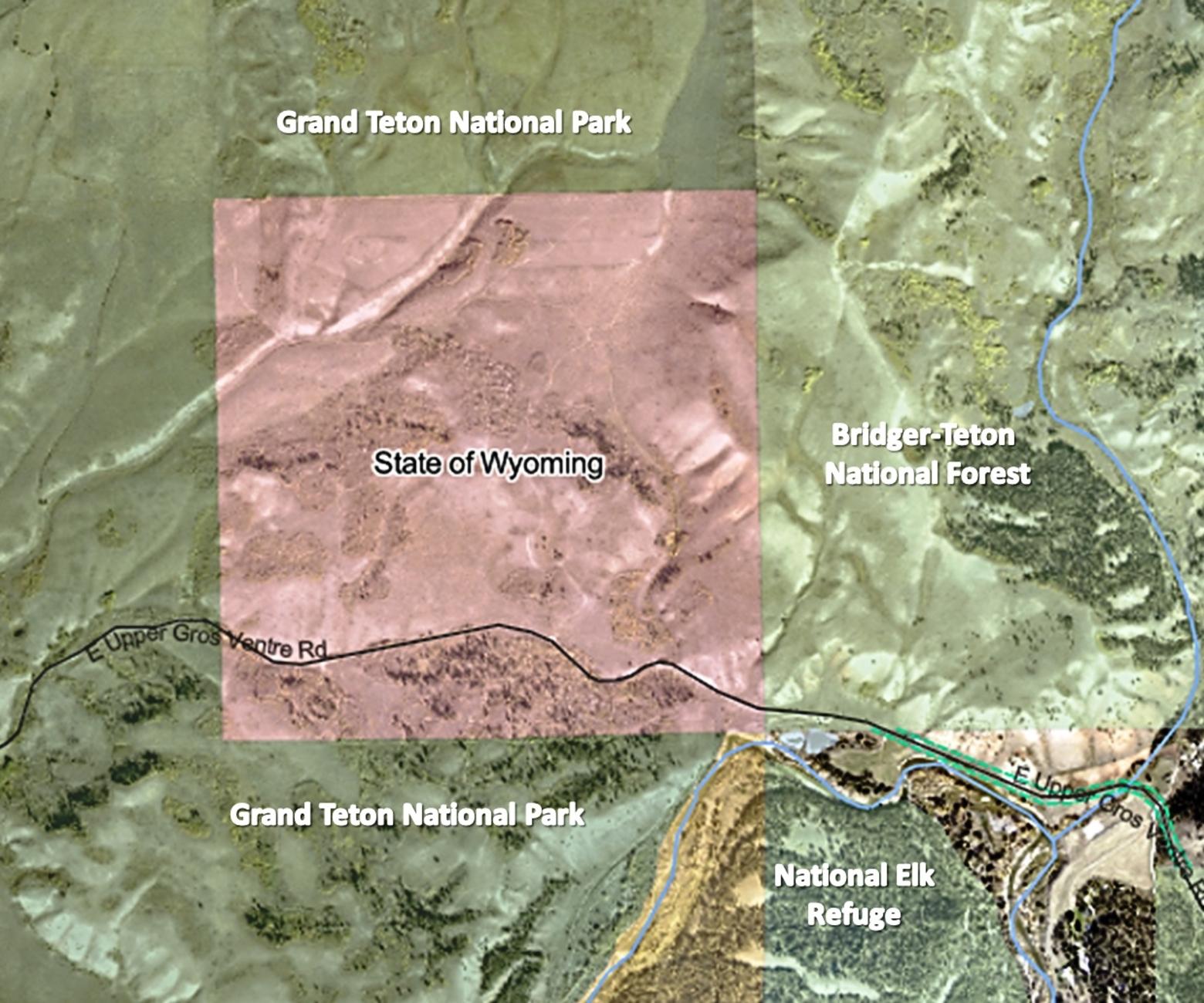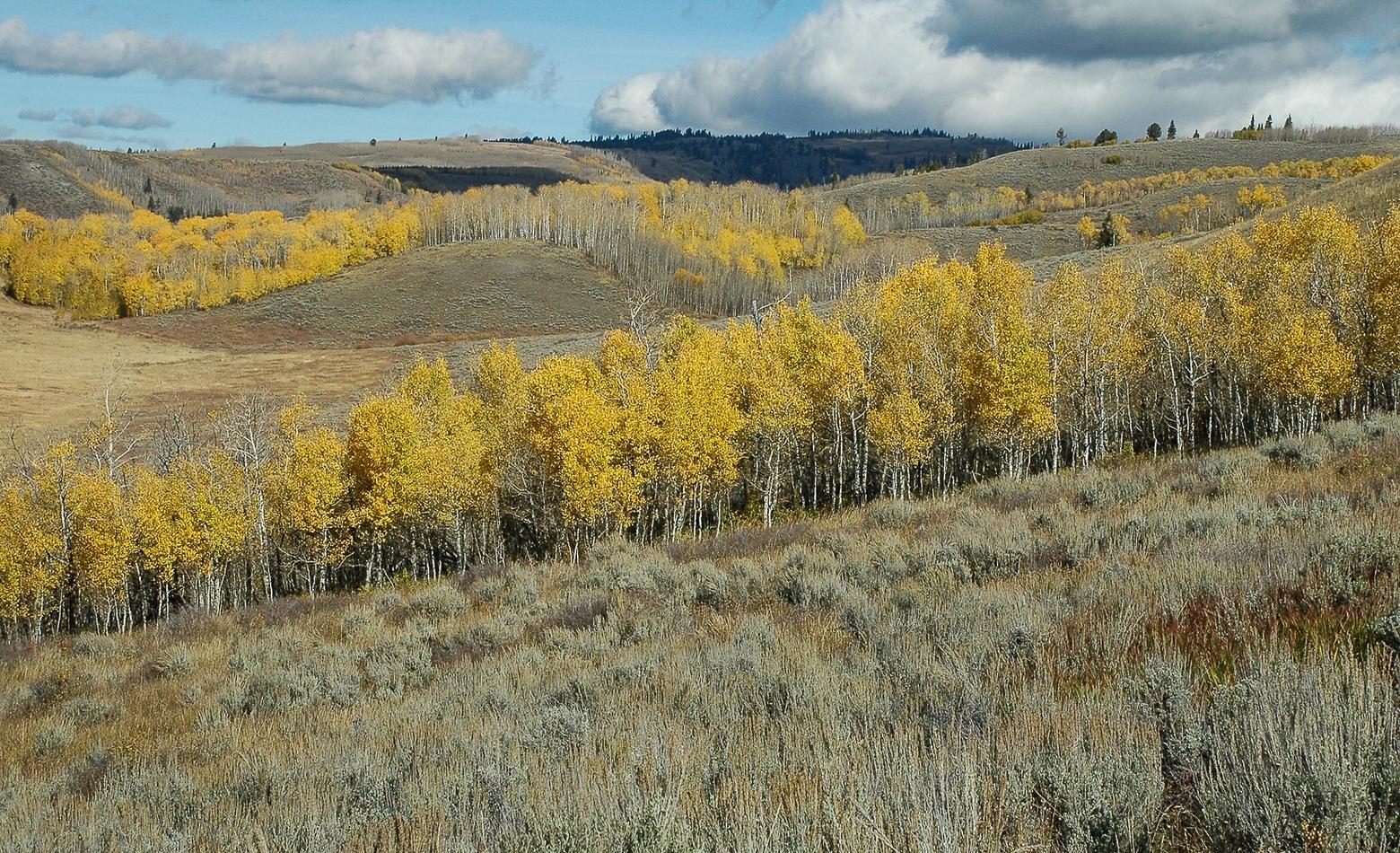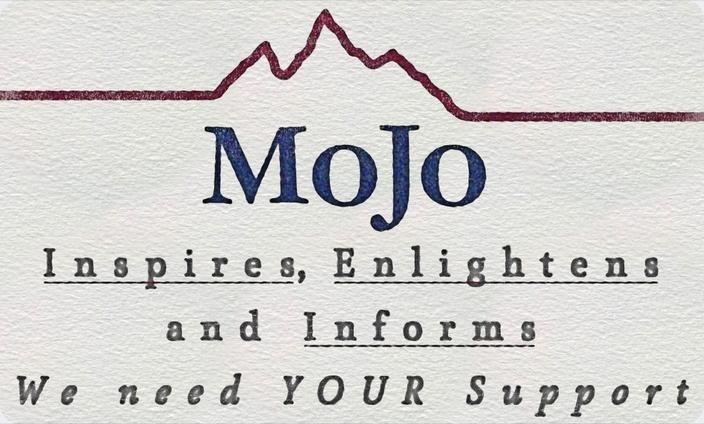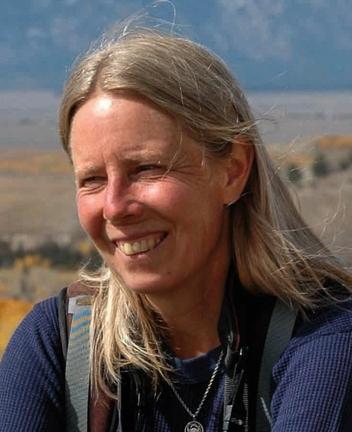Back to StoriesTo Protect a Section of Precious Land
Comments on the proposed auction can be sent to: Attention: Jason Crowder, Office Of State Lands and Investments, 122 W. 25th Street, Herschler Building Suite W103, Cheyenne, WY 82002 or email at jason.crowder@wyo.gov.
November 3, 2023
To Protect a Section of Precious LandWhy would Wyoming put a wildlife-rich 640-acre land parcel up for auction? Hint: Big money.
by Susan Marsh
A month
ago, the Wyoming Board of Land Commissioners announced it was considering auctioning
a 640-acre section of State Trust Land surrounded by Grand Teton National Park
and Bridger-Teton National Forest. This has sent antennae of concern skyward
among Teton County residents. Why?
Because Grand
Teton National Park surrounds it, except for the east side, which is within the
Bridger-Teton National Forest, and both agencies manage the adjacent land for
low-impact recreation and wildlife. It’s on the celebrated Path of the
Pronghorn (as well as on migration routes for elk and mule deer). It’s
important moose and sage grouse winter range. It offers a view of the entire Teton
Range from Teton Pass to Ranger Peak. And because the likely high bidder for
such an auction is a well-heeled land developer with an eye toward selling
high-end lots to the ultra-wealthy.
For those unfamiliar with state
trust land, here’s a brief note about its origins. The Northwest Ordinance of
1785 created a land grant program to help fund education in each state as it
joined the union. But the federal government didn’t have the actual cash to
build schools and hire teachers, so it turned to its relative abundance of land
in the public domain. Each new state received one 640-acre section for every
township within its boundaries. (A township consists of 36 square-mile
sections.) Later, two sections were deeded to new states.
While some states quickly sold off
most of their state trust lands to generate immediate income, those
encompassing the Greater Yellowstone region have retained the majority of
theirs. According to a report by Headwaters Economics, state trust lands make
up one out of every 20 acres in the western United States.
That sounds like a lot of land, but
trust lands are scattered and dispersed among other ownerships, so they don’t
form large areas. In Wyoming, state “school sections,” as they are often
called, create a checkerboard pattern over many counties. Teton County has only
a few school sections, since some have already been sold, and much of the
county lies within a national park, forest or wildlife refuge.
Without realistic legislation to allow direct transfer to the park, and given the state’s apparent interest in disposing of the Kelly parcel sooner rather than later, it appears that the only option is an auction.
State trust land belongs to each state
for the primary purpose of generating revenue. This differs from federal public
land, which is managed by agencies like the National Park Service, but belongs
to the people. State school sections belong to the state, and it’s up to each
state to decide which, if any, will be open to the public. Some states allow,
but don’t necessarily manage for, public use such as hunting, hiking and other
outdoor recreation. Because of Wyoming’s generous public access policies, some
of the school sections in Teton County have become favorite haunts for
off-trail rambling. And since the school sections aren’t advertised the way the
national parks are, they have found a loyal following of locals seeking to
avoid the crowds.
The school section in question at
the moment, the so-called Kelly parcel for its proximity to the town of Kelly, lies
astride the popular Gros Ventre River Road and offers spectacular views of the
entire Teton Range, the Gros Ventre Slide, and glimpses of landmarks like
Jackson Peak with a foreground of aspens, lime-green in spring and orange-gold
in fall. Its terrain is relatively gentle, with a mix of woods and open land, aspen,
sagebrush and other shrubs. Informal trails join others on the adjacent
national park and forest.
The Kelly parcel is a haven for
wildlife, from ungulates to sage grouse to songbirds. As part of a major
migration corridor in the Gros Ventre River watershed, it hosts elk which travel
over it in spring and fall as they move between the mountains and the National
Elk Refuge. Pronghorn, the few that remain after the devastating winter of
2022-23, favor its vegetation and wide-open spaces. Mule deer and bison also
find favorable habitat here. A few weeks ago, I was hiking along a trail on the
parcel and stopped to watch a migrating flock of mountain bluebirds while
Swainson’s hawks circled above. Sage grouse and sharptails have flushed from
their roosts at my approach on skis.
There is a conundrum at play. The appraisal figure of $62 million represents the minimum bid the state will accept at auction. The Park Service is limited to offering no more than the appraised value. The chance of both entities agreeing to $62 million without being outbid seems unlikely.
The land
has been a bone of contention between the National Park Service and the state
for decades. Land exchanges have been proposed, and after failed attempts to
consummate them, they were abandoned. A couple of years ago, the Park Service
attempted to buy the Kelly parcel. Teton County’s legislators introduced a bill
to authorize the purchase, but a representative from a county halfway across
the state amended their proposal to demand a price of $3.2 billion. The full house voted for this amendment.
The
outrageous price tag notwithstanding, land values in Teton County have shot
through the roof in the past decade, and it’s hard to blame the Board of Land
Commissioners for trying to increase its income from the state sections here.
They have mostly been used for livestock grazing, gravel mining, and permitted
recreational outfitting, which doesn’t bring much annual income compared to
that from other counties through mineral and energy leases.
While not
quite in the $3 billion range, the Kelly parcel has been appraised based on the
assumption that subdivision into 35-acre (or larger) residential lots would be
the most likely and appropriate use of the property. Considering sales of
similar properties with similar zoning, the assessment pencils out to $62
million—or $97,000 per acre.
The cost
of an acre of undeveloped land 15 miles from town with no utilities or
infrastructure may sound stratospheric. But in Teton County, $97,000 sounds cheap.
Other offerings in a random check I conducted for a handful of similar
properties yielded an average asking price of $260,000 per acre.
Whatever
the numbers, there is a conundrum at play. The appraisal figure represents the
minimum bid the state will accept at auction. The Park Service is limited to
offering no more than the appraised value. The chance of both entities agreeing
to $62 million without being outbid seems unlikely.
To many
who know and love the Kelly parcel, the highest and best use of this land is to
retain it for public enjoyment and wildlife habitat by adding it to Grand Teton
National Park. But non-priced/priceless and irreplaceable values cannot compete
with the revenue to be gained through sale. Without realistic legislation to
allow direct transfer to the park, and given the state’s apparent interest in
disposing of the Kelly parcel sooner rather than later, it appears that the
only option is an auction.
What can
be done to protect this parcel? Grand Teton National Park and the Teton County
Board of Commissioners have expressed concern. Local and regional news outlets
have covered the situation and a public demonstration against the auction is
planned in Jackson on Monday afternoon, November 6. The Wyoming Game and Fish
Department has cited the potential impacts to wildlife, particularly the
migrating big game that use this parcel. The department cites 87 “Species of
Greatest Conservation Need” in the state whose distributions include the Kelly parcel.
It seems that no one, aside perhaps from real estate businesses, wants this
auction to happen, and a number of realtors have openly said that they think it
is a bad idea.
The Wyoming Game and Fish Department has cited the potential impacts to wildlife, particularly the migrating big game that use this parcel ... A public demonstration against the auction is planned in Jackson on Monday afternoon, November 6.
Saving a
state parcel within the national park is not new. Another school section within
Grand Teton was acquired in 2016 with assistance from nonprofits and generous
private donors who helped raise the appraised sum of $46 million. One would
assume that the park is currently looking for similar help should the auction
move ahead. It could offer its maximum allowable of $62 million—assuming the
Park Service has that capacity at all—and donors would make up the rest.
The State
Board of Land Commissioners will consider the proposal for disposing of the
Kelly parcel at its upcoming meeting on December 7.
This
isn’t the only school section in the county with the potential for being
radically altered by sale or lease to private enterprises whose activities
would, to put it mildly, be incompatible with current conditions of those
parcels and surrounding federal land.
Do we
rally to save the Kelly parcel, then, with empty pocketbooks, watch the school
sections elsewhere go on the auction block? Given the state’s mandate to
generate income through these school sections, is there a way to facilitate
that without running into conflicts with county regulations and the management
of national forest and other lands nearby? Generating income does not
necessarily mean maximizing income at the expense of other values.
I write
this with passionate love for some of these state sections, yet I realize this
is a first-world problem. We sit in relative comfort in the Greater Yellowstone
region, blessed with wild land and beauty all around us, while refugees go
hungry in squalid camps around the world. I can’t do much about that, other
than to write a check to Oxfam or such, but I can enjoy and appreciate and try
to protect the land I love at home, while thanking the state that has so far
allowed me and others to access school sections that have come to feel sacred.
And I am reminded that what is sacred is also priceless, and it should remain
that way.
_______________________________________________________________________________________________________________________________
Related Stories
January 21, 2025
Why ‘Yellowstone’ Became a Dirty Word to so Many Montanans
No one ever claimed the hit cowboy soap opera was aiming for realism. But for Montana locals, the show’s many day-to-day...
February 27, 2024
Meet me in Fairyland
In his latest essay, MoJo contributor Todd Burritt examines nature, friendship and the enduring magic of
Yellowstone's backcountry.
January 16, 2024
In Cadence: ‘Mni Wiconi’ and the Great Observers
Recalling the 2016 Standing Rock demonstrations protesting the Dakota Access Pipeline, a Lakota woman reflects on the rhythm and power of...

